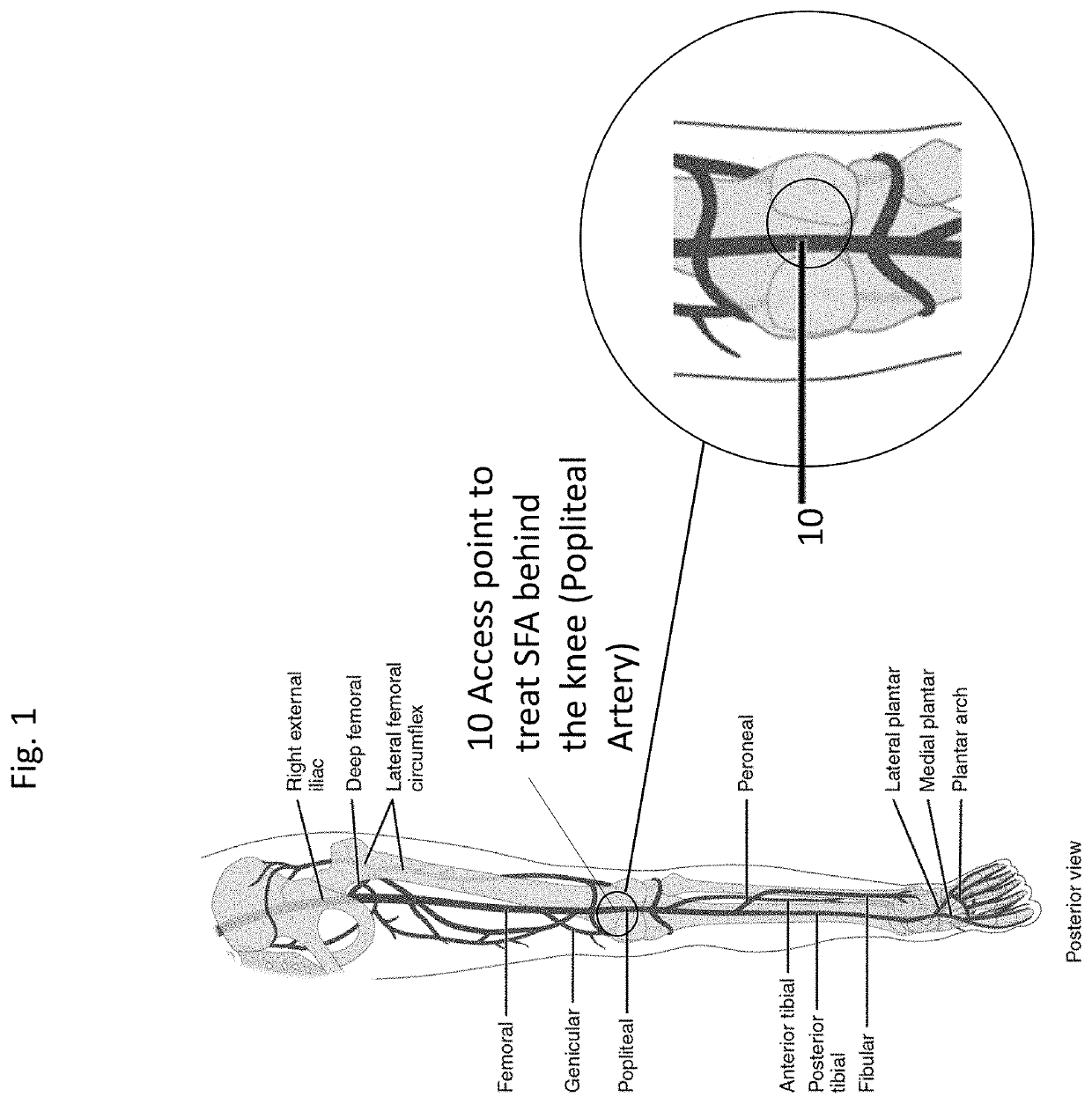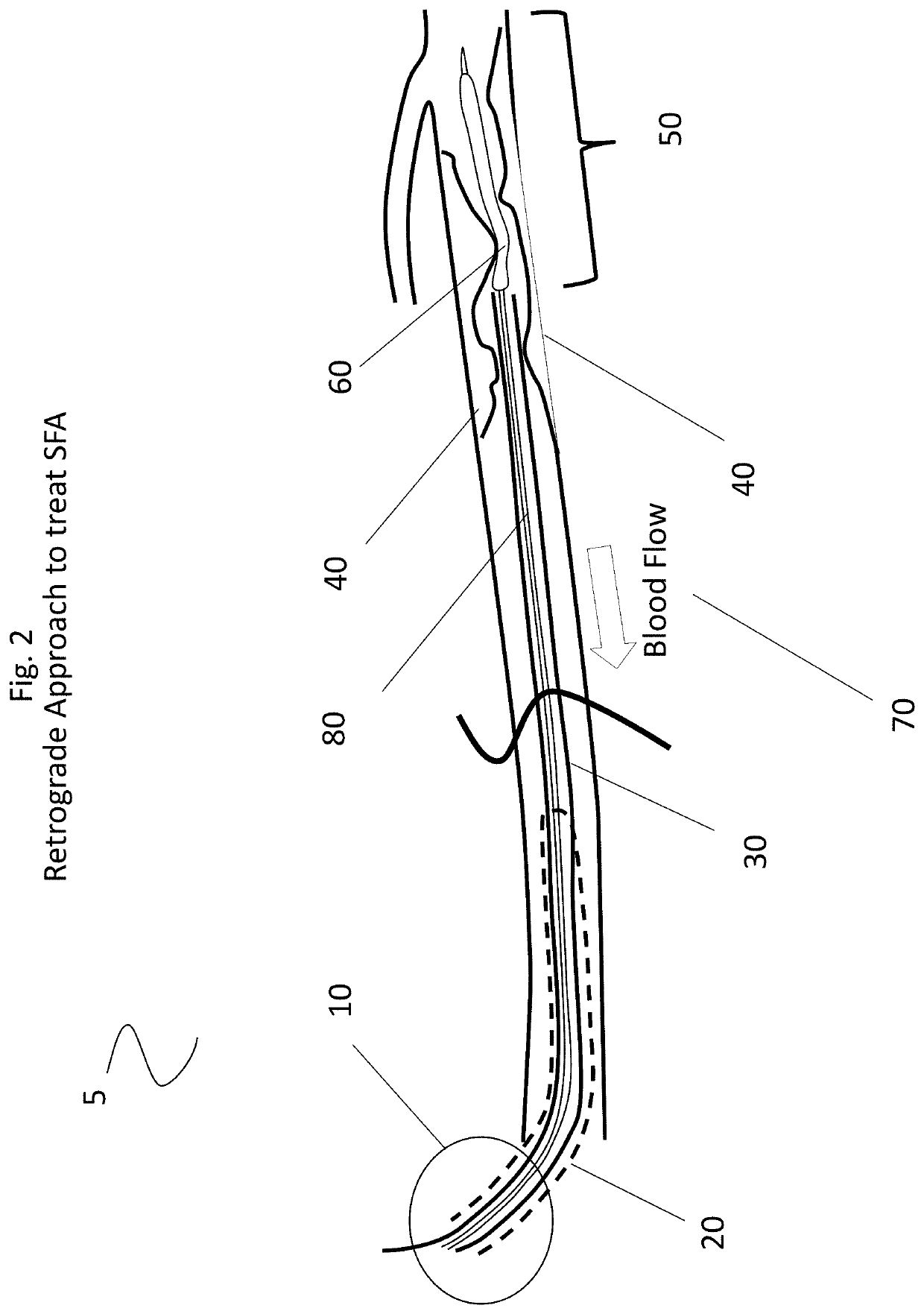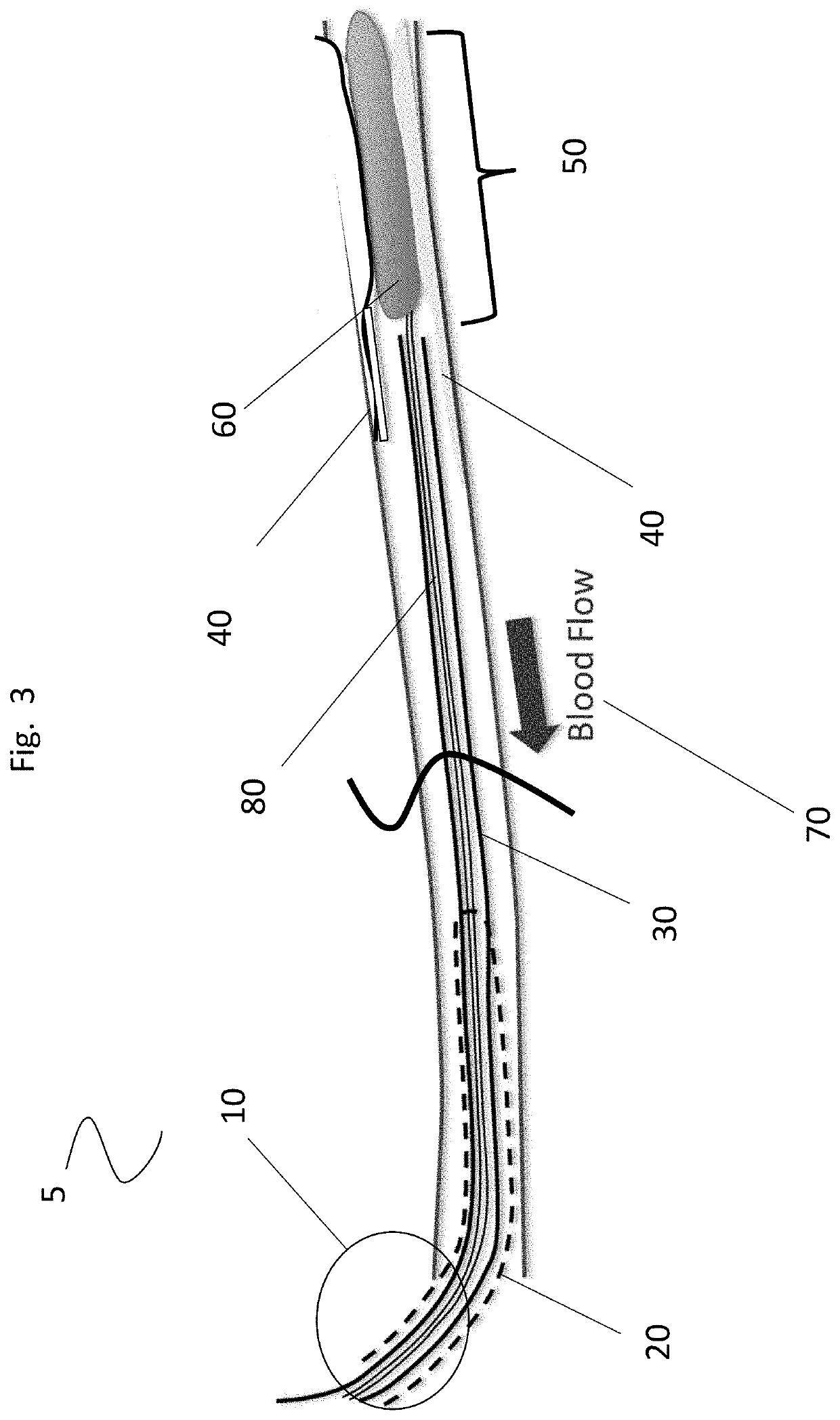System and method for treatment of the claudification of the superficial femoral and proximal popliteal artery
a technology of proximal popliteal artery and superficial femoral vein, which is applied in the field of medical devices, can solve the problems of reducing affecting the quality of life of the patient, so as to achieve the effect of restoring proper blood flow
- Summary
- Abstract
- Description
- Claims
- Application Information
AI Technical Summary
Benefits of technology
Problems solved by technology
Method used
Image
Examples
Embodiment Construction
[0071]The detailed description set forth below in connection with the appended drawings is intended as a description of presently preferred embodiments of the system and does not represent the only forms in which the present system may be constructed and / or utilized. The description sets forth the functions and the sequence of steps for constructing and operating the system in connection with the illustrated embodiments.
[0072]FIG. 1 illustrates a cross sectional view of a human limb further illustrating the anatomy of the limb with the arteries highlighted and further illustrating an access point 10 for a retrograde approach to treating blockages of the lower superficial femoral artery (SFA).
[0073]FIG. 2 illustrates a cross sectional view of the procedural tract 5 illustrating the access point 10 for retrograde approach to treating blockages of the lower SFA, further illustrating the instrumentation utilized at the access point 10 or the puncture site and for sheath access through t...
PUM
 Login to View More
Login to View More Abstract
Description
Claims
Application Information
 Login to View More
Login to View More - R&D
- Intellectual Property
- Life Sciences
- Materials
- Tech Scout
- Unparalleled Data Quality
- Higher Quality Content
- 60% Fewer Hallucinations
Browse by: Latest US Patents, China's latest patents, Technical Efficacy Thesaurus, Application Domain, Technology Topic, Popular Technical Reports.
© 2025 PatSnap. All rights reserved.Legal|Privacy policy|Modern Slavery Act Transparency Statement|Sitemap|About US| Contact US: help@patsnap.com



